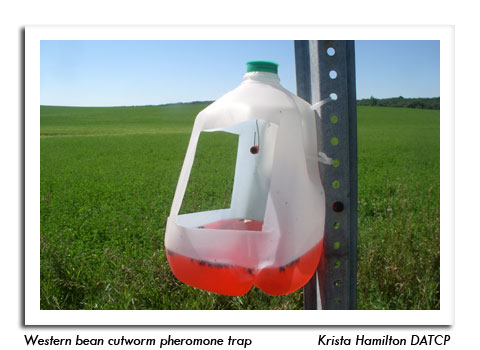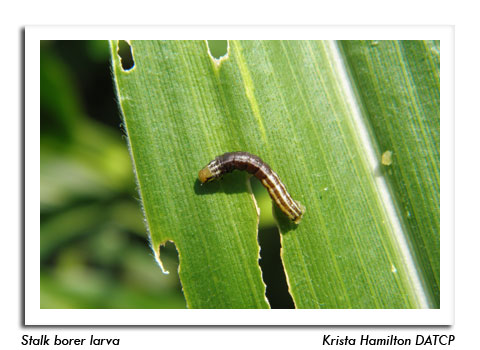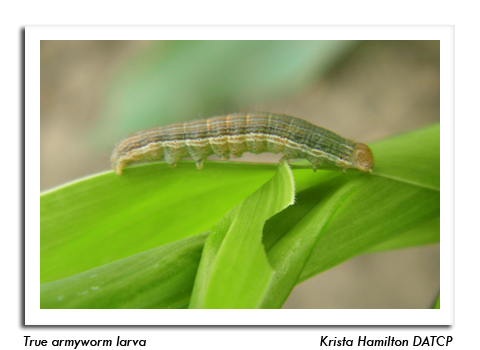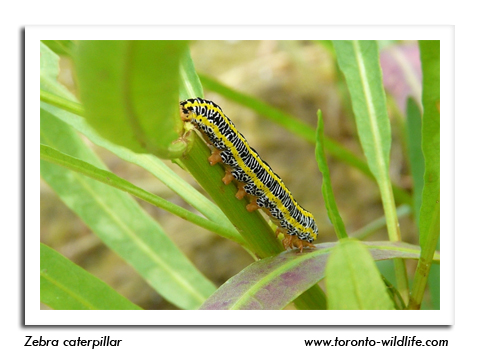
 |
|
|
Corn
Volume 60 Number 11 Date 07/02/2015 STALK BORER - Damage to corn has become pronounced as larvae approach maturity. Surveys of V7-V11 corn found infestation rates of 1-20%, with the highest population noted near Lake Mills in Jefferson County. Spot treatment is no longer effective for many southern and western Wisconsin fields since the larvae have bored into the stalks and unemerged tassels. Treatments must be applied from 1,400-1,700 degree days (base 41°F), or prior to the V7 stage. Stalk borer feeding is unlikely to kill corn plants beyond V7. EUROPEAN CORN BORER - Larval infestation rates remain about the same as reported in previous weeks, with the typical population affecting less than 10% of the plants and a few exceptional fields showing 20-40% whorl feeding. Larvae range in development from second- to fourth-instar in surveyed areas. The most prevalent stage is the third instar. TRUE ARMYWORM - The significant flight of 271 moths reported from Janesville last week declined to 22 this week, but continued scouting of corn and wheat is recommended. Small larvae ranging from ¼-½ inch are very common in alfalfa sweep net collections and a report from Sheboygan County states that four winter wheat fields there were treated for armyworms earlier in the week. ZEBRA CATERPILLAR - This infrequent pest with prominent black and yellow longitudinal stripes was defoliating corn leaves in the Chilton area of Calumet County on June 22. Larvae feed during the day on the foliage of a variety of broadleaf field and vegetable crops, ornamental trees and flowers, causing ragged leaves. The young caterpillars initially feed together in groups, but later separate and feed individually. The zebra caterpillar occurs sporadically in Wisconsin and is generally not considered a serious pest. -- Krista Hamilton, DATCP Entomologist 





|
|
|